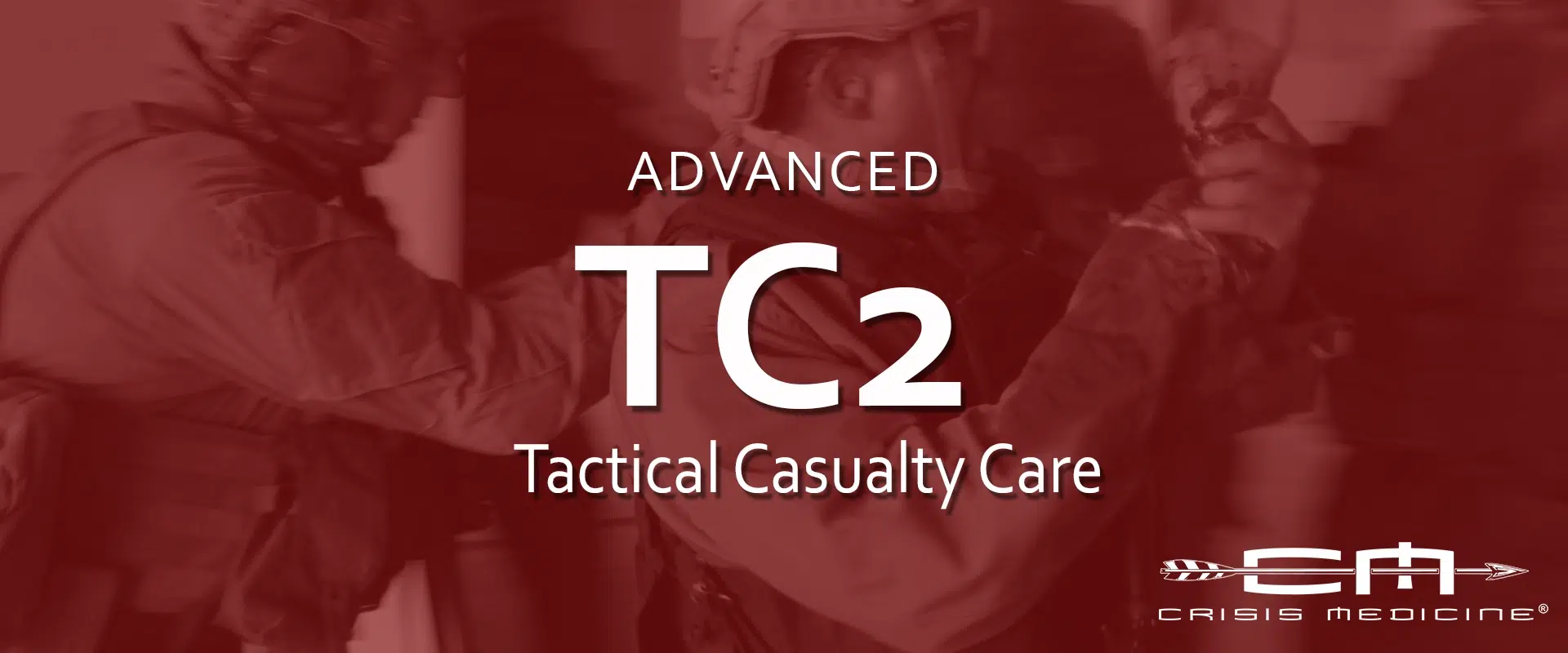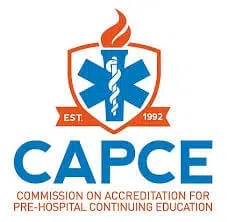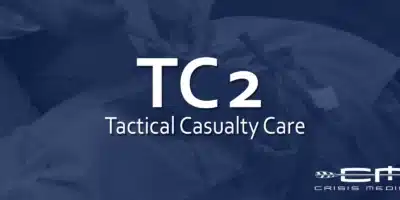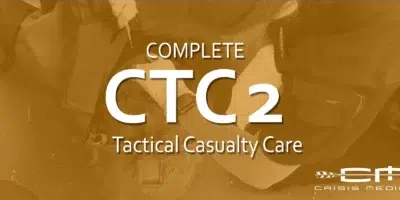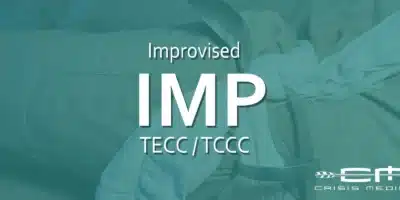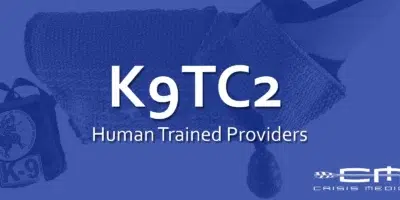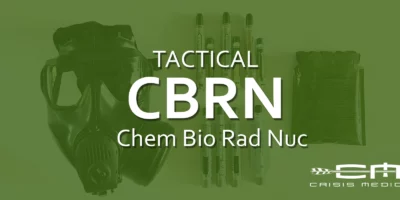Advanced Tactical Casualty Care
This dynamic and practical course covers the evaluation and treatment of the tactical casualty during the Care Under Fire/Direct Threat and Tactical Field Care/Indirect Threat phases. This stand-alone course covers all the materials presented in the Tactical Casualty Care course and builds upon that with additional hemorrhage control skills, recognition, and management of tension pneumothorax, practical airway devices, additional demonstrated skills stations, and much more extensive example scenarios. CAPCE-accredited CEH is awarded upon successful completion.
Online, self-paced. Every aspect of the course was reviewed and revised in June, 2025.
The course uses photographs of actual injuries, diagrams of wounds, and step-by-step demonstrations. The material is presented in an easy-to-understand, directly applicable way. This class is consistent with current Tactical Combat Casualty Care (TCCC) guidelines as well as the guidelines for Tactical Emergency Casualty Care (TECC). It also exceeds the Stop the Bleed curriculum.
The Advanced TC2 course covers everything in TC2:
The nature and myths of gunshot wounds and realities of their medical management
How to rapidly evaluate injuries and how they affect your tactical treatment plan
The concept of “care under fire” and how it differs from a non-tactical medical situation
Assessment and management of penetrating, blunt, and blast injuries
Assessment and management of massive hemorrhage
The safe and efficient use of improvised and commercially available tourniquets
Basic airway and breathing assessment, as well as management within a high risk environment
Techniques for moving casualties to a safer location
And the Advanced TC2 Course adds the following topics and skills:
Choosing appropriate medical care for each treatment phase
Extensive practical exercises managing all types of hemorrhage, including junctional hemorrhage, effectively packing wounds, and hemostatic agents
Nasal Pharyngeal Airways and airway positioning
In-depth discussion of thoracic trauma (chest injuries), chest seals, recognition of tension pneumothorax and its decompression
Appropriate treatment of casualties with abdominal injuries and head injuries
Casualty hypothermia prevention
Detailed training and demonstrations of moving casualties efficiently
Triage of multiple casualties and setting up a Casualty Collection Point
Tactical Casualty Care concepts and their application
This course includes dynamic presentation including photos, videos, and real-life examples, and demonstrations of practical skills, and example scenarios
Want to see an example of the course?
You can see the teaching lecture and skills station for the Foley Catheter Wound Packing technique. This material is excerpted from the Junctional Hemorrhage and Hemostatic lecture and skills stations.
If you carry a firearm and an Individual First Aid Kit, this course will show you what should be in your kit, what you should take out, and how to most efficiently use everything around you.
Upon completing the course, students receive a certificate indicating they have taken a course based on the TECC/TCCC guidelines. Students who provide State or National registry information will be provided a CAPCE-compliant certificate for CEH.
Students have 6 months from purchase date to complete the course.
No prior medical knowledge or training is necessary to take this course, but it teaches some skills your state may characterize as paramedic level.
CAPCE Accredited Provider
This CE activity is accredited for 18 Advanced CEH by Crisis Medicine, an organization accredited by the Commission on Accreditation for Prehospital Continuing Education.
Not sure if online training is for you? See what our students say…
ASIS Preferred CPE Provider
This program is accredited for 18 CPEs and can be used for recertification for APP, CPP, and/or PSP designations.
Course Features
- Lectures 84
- Quizzes 7
- Duration 18 hours
- Skill level All levels
- Students 358
- Certificate Yes
- Assessments Yes
- 9 Sections
- 84 Lessons
- 24 Weeks
- Foundational Understanding11
- 1.1Course Orientation – ATC22 Minutes
- 1.2Always Updated1 Minute
- 1.3Introduction to Crisis Medicine – ATC210 Minutes
- 1.4Advanced Tactical Casualty Care Workbook **DOWNLOADABLE PDF**
- 1.5Introduction to Advanced Tactical Casualty Care – ATC2 Part 119 Minutes
- 1.6Introduction to Advanced Tactical Casualty Care – ATC2 Part 223 Minutes
- 1.7Quiz: Introduction ATC212 Minutes12 Questions
- 1.8Wound Ballistics and Combat Mindset – ATC2 Part 123 Minutes
- 1.9Wound Ballistics – ATC2 Part 225 Minutes
- 1.10Wound Ballistics – ATC2 Part 328 Minutes
- 1.11Wound Ballistics Quiz (ATC2)8 Minutes6 Questions
- Bleeding Management36
- 2.1Hemorrhage Control Concepts – ATC2 Part 119 Minutes
- 2.2Hemorrhage Control Concepts – ATC2 Part 221 Minutes
- 2.3Skills: Direct Pressure – ATC21 Minute
- 2.4Skills: Bandaging – ATC217 Minutes
- 2.5Quiz: Hemorrhage Control Concepts & Skills ATC215 Minutes15 Questions
- 2.6Tourniquet Concepts15 Minutes
- 2.7Co-TCCC Tourniquets ATC27 Minutes
- 2.8Proper / Improper Tourniquet Application ATC218 Minutes
- 2.9Tourniquets: Removal / Conversion10 Minutes
- 2.10Tourniquets on Actual Casualties – ATC218 Minutes
- 2.11Tourniquets & Pediatrics – ATC24 Minutes
- 2.12Tourniquet Breakage – ATC27 Minutes
- 2.13Counterfeit Tourniquets7 Minutes
- 2.14Skills: CAT Tourniquets Gen 6 & 7 – ATC225 Minutes
- 2.15Skills: CAT Casualty Application – ATC26 Minutes
- 2.16Skills: SOF Tourniquets – ATC213 Minutes
- 2.17Skills: SAM XT Tourniquet – ATC25 Minutes
- 2.18Skills: RMT Tourniquet – ATC26 Minutes
- 2.19Skills: TMT Tourniquet – ATC23 Minutes
- 2.20Skills: Improvised Tourniquets – Military TQT Cravat & Windlass – ATC26 Minutes
- 2.21Quiz: Tourniquets – ATC210 Minutes10 Questions
- 2.22Scenario: A Bad Day At the Office – ATC24 Minutes
- 2.23Junctional Hemorrhage – ATC216 Minutes
- 2.24Hemostatics – ATC230 Minutes
- 2.25Skills: Wound Packing – ATC25 Minutes
- 2.26Skills: Hemostatic Agents – ATC210 Minutes
- 2.27XSTAT – ATC221 Minutes
- 2.28iT Clamp – ATC213 Minutes
- 2.29Wound Packing with Foley Catheter – ATC27 Minutes
- 2.30Skills: Wound Packing Bandage – ATC28 Minutes
- 2.31Junctional Tourniquets & DCBI: Dismounted Complex Blast Injury – ATC210 Minutes
- 2.32Quiz: Junctional Hemorrhage & Hemostatic Agents – ATC26 Minutes6 Questions
- 2.33Scenario: Tough Day in the Ladies’ Room ATC22 Minutes
- 2.34Skills: Blood Sweep & Casualty Evaluation – ATC210 Minutes
- 2.35Case: Forearm Versus Plate Glass Window – ATC29 Minutes
- 2.36Scenario: Worst Place to Work – ATC22 Minutes
- Airway & Respiration4
- Respiration10
- 4.1Thoracic Trauma – ATC226 Minutes
- 4.2Tension Pneumothorax – ATC217 Minutes
- 4.3Chest Seals – ATC220 Minutes
- 4.4Skills: Chest Seals – ATC215 Minutes
- 4.5Needle Decompression – Introduction – ATC211 Minutes
- 4.6Needle Decompression – Procedure – ATC212 Minutes
- 4.7Needle Decompression – Finesse Points – ATC217 Minutes
- 4.8Skills: Needle Decompression – ATC214 Minutes
- 4.9Finger Thoracostomy – ATC213 Minutes
- 4.10Skills: Finger Thoracostomy – ATC28 Minutes
- Movement6
- Other Injuries7
- Conclusion & Implementation8
- 7.1Phases of Tactical Casualty Care – ATC225 Minutes
- 7.2Traumatic Out of Hospital Cardiac Arrest – ATC211 Minutes
- 7.3Evaluation of Hypovolemic Shock16 Minutes
- 7.4Final Points24 Minutes
- 7.5Triage – ATC231 Minutes
- 7.6Public Access Hemorrhage Control Kits – ATC26 Minutes
- 7.7Quiz: Phases of Tactical Casualty Care – ATC215 Minutes14 Questions
- 7.8Case: Virginia Tech – ATC28 Minutes
- Scenarios6
- Student Evaluation & Certificate of attendance *DOWNLOADABLE PDF*3

